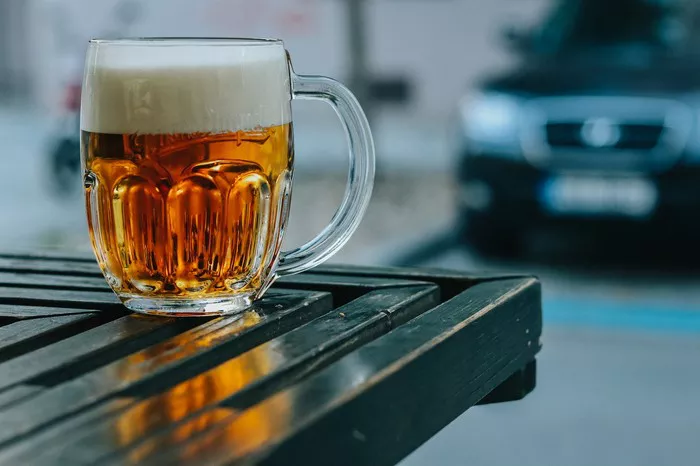The consumption of beer is deeply embedded in various cultures worldwide, often serving as a social lubricant and a way to unwind after a long day. However, the question remains: how many beers does the average person drink a day? Understanding drinking patterns is crucial in comprehending the impact of beer consumption on individuals and society as a whole.
Defining Average Beer Consumption
When delving into the realm of beer consumption, averages provide a broad perspective. Various factors influence how much beer an individual consumes daily. Culture, societal norms, personal preferences, and individual tolerance levels all contribute to the amount of beer consumed. According to statistics and surveys, the average person consumes approximately one to two beers per day. However, this figure is highly variable and can differ significantly based on demographics, geographical location, and personal habits.
Demographics and Beer Consumption
Demographic factors play a substantial role in determining daily beer intake. Age, gender, income level, and educational background all contribute to an individual’s drinking habits. Studies suggest that younger individuals tend to consume more beer compared to older age groups. Additionally, men generally consume more beer daily than women, with social, cultural, and biological factors influencing this disparity. Income levels and education also correlate with beer consumption, with higher income individuals often consuming more beer than those with lower incomes.
Geographical Variances in Beer Consumption
Geographical location is a significant determinant in assessing the average daily beer consumption. Countries with strong beer cultures, such as Germany, Belgium, and the Czech Republic, tend to have higher average beer consumption per capita. In these nations, beer is deeply ingrained in social traditions and is often a part of daily life. Conversely, countries with less emphasis on beer in their culture may exhibit lower daily consumption rates.
Cultural Influences on Beer Consumption
Cultural norms and values greatly impact how much beer an individual consumes daily. In countries where social gatherings often revolve around alcohol, including beer, the average daily consumption tends to be higher. Societies that encourage moderate drinking as a social activity may witness individuals consuming one to two beers daily as a customary practice. Contrarily, cultures that discourage alcohol consumption may exhibit lower daily beer intake among their population.
Health Considerations and Beer Consumption
Understanding the health implications of beer consumption is crucial in analyzing the average daily intake. While moderate beer consumption may have some health benefits, excessive consumption poses significant health risks. Studies suggest that moderate beer consumption—typically defined as one to two beers per day for men and one for women—may have cardiovascular benefits due to the presence of antioxidants and certain nutrients in beer. However, exceeding these limits can lead to adverse effects on liver function, increased risk of addiction, and various health issues, including obesity and heart problems.
Factors Affecting Individual Beer Consumption
Individual factors also significantly influence how much beer a person consumes daily. Personal preferences, tolerance levels, psychological factors, and past experiences all play a role in determining an individual’s beer intake. Some individuals may have a higher tolerance for alcohol, leading them to consume more beer daily without experiencing adverse effects. Others may limit their intake due to health concerns or personal choice.
Social and Peer Influences on Beer Consumption
Social and peer influences have a substantial impact on an individual’s drinking habits. Peer pressure, social gatherings, and cultural norms can influence a person to consume more beer than they would otherwise. Social events often involve alcohol, including beer, leading individuals to partake in drinking more than they would in solitary settings. Additionally, societal norms that glorify alcohol consumption can contribute to increased daily beer intake among certain groups.
The Role of Advertising and Marketing
The advertising and marketing strategies employed by beer companies also contribute to the average daily consumption. Clever advertising campaigns, endorsements by celebrities, and targeted marketing strategies can influence consumer behavior. Promotions and advertisements showcasing beer as a symbol of fun, relaxation, and camaraderie can encourage individuals to consume more beer daily.
Economic Factors and Beer Consumption
Economic factors, such as affordability and accessibility, play a role in determining how much beer an individual consumes daily. Countries with lower beer prices and widespread availability may witness higher average daily consumption rates. Affordability influences purchasing power and, consequently, how much beer individuals can afford to consume regularly.
Regulatory Measures and Beer Consumption
Regulatory measures implemented by governments also impact the average daily beer consumption. Laws regulating the sale, distribution, and advertising of alcohol can affect drinking patterns. Restrictions on alcohol sales hours, age limits, and taxation policies can influence how much beer individuals consume on a daily basis.
Conclusion
Understanding how many beers the average person drinks a day involves considering a myriad of factors, including demographics, cultural influences, health considerations, individual behaviors, societal norms, and economic aspects. While averages suggest one to two beers per day, this figure varies significantly based on numerous factors. It’s essential to comprehend the complexities surrounding beer consumption to address potential health risks, societal implications, and regulatory measures necessary to promote responsible drinking habits within communities.


